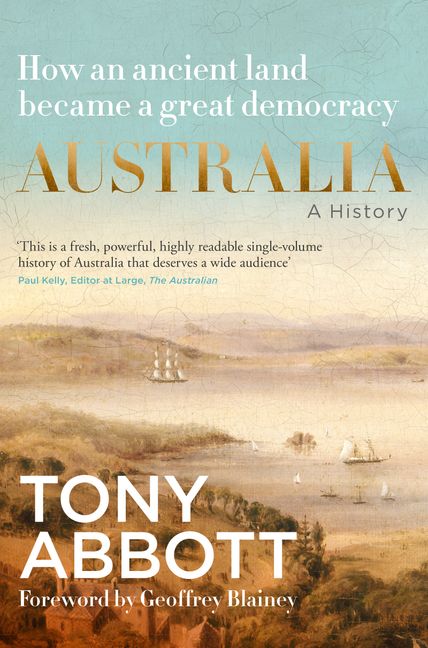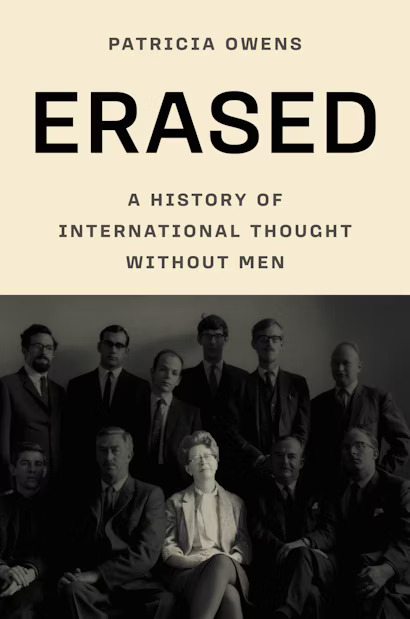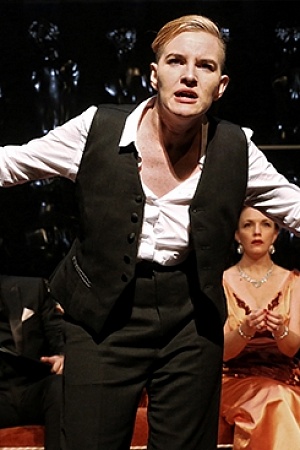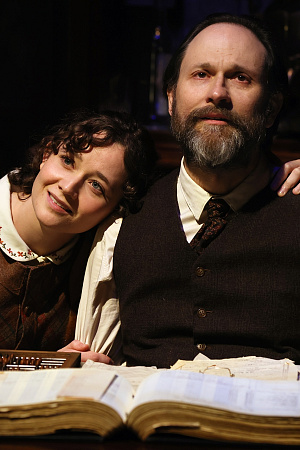Sense and Sensibility (State Theatre Company of South Australia) ★★★
The short-lived but bold experiment that has been the State Theatre Company of South Australia’s actors’ ensemble comes to an end with its fourth production, Kate Hamill’s adaptation of Jane Austen’s Sense and Sensibility. More on the play later, but what of the experiment? Acting ensembles have a chequered history in this country, and have not lately been in fashion. STCSA hasn’t had one since 1985, during Keith Gallasch's brief, turbulent artistic directorship. The Sydney Theatre Company’s fraught Actors Company was among the last attempted by a mainstage Australian theatre company, producing – among a handful of relative failures – some of the defining productions of the mid-2000s, including Benedict Andrews’s still-talked-about War of the Roses. That ensemble was intended to improve the actors’ craft, to differentiate the company from its interstate counterparts, and, presumably above all, to lift the standard of the work for the benefit of audiences. Though much has been made of the financial security the STCSA ensemble has afforded its six mostly young and emerging actors, no doubt the company’s artistic director Geordie Brookman had in mind something similar. If, however, the project was also intended as a rebuke to the idea that the time of the actors’ ensemble has come and gone, it can only be said to have backfired.
Brookman has directed each of the ensemble’s productions, and I have written elsewhere of their lack of directorial and dramaturgical rigour, while privately questioning the wisdom of the company’s employing a sole director to bring to the stage within eighteen months four demanding works: a new adaptation of Ibsen’s A Doll’s House, Macbeth, a commission by Patricia Cornelius for the Adelaide Festival, and, finally, Sense and Sensibility. While the last, not sharing its predecessors’ fatal inconsonances between text and staging, is by no means the least of the ensemble’s work, it nevertheless completes Brookman’s failure to make the artistic case for the ensemble.
It must have seemed a sure bet when it was programmed. American playwright–actress Kate Hamill’s acclaimed script, a jocose but faithful adaptation of Austen’s first novel, has toured widely in the United States since its first short run in repertory in 2014. In both closely adhering to the book’s plot and themes and ramping up its sly, social-observational humour, it seems designed to please everybody – casual theatregoer and dedicated Janeite alike. The play economises Austen’s text without contemporising it, appealing to modern sensibilities not by way of making a burlesque of its old timeyness, but, on the contrary, by subtly drawing out its lasting resonances while compressing the ‘little bit (two inches wide) of ivory’ on which Austen famously worked. As this accessible adaptation makes clear, Austen was interested in gossip as a force that both drives and divides society, and it takes little imagination to see how pertinent this idea remains in the age of breakfast television, women’s magazines, and social media.
Continue reading for only $10 per month. Subscribe and gain full access to Australian Book Review. Already a subscriber? Sign in. If you need assistance, feel free to contact us.











Leave a comment
If you are an ABR subscriber, you will need to sign in to post a comment.
If you have forgotten your sign in details, or if you receive an error message when trying to submit your comment, please email your comment (and the name of the article to which it relates) to ABR Comments. We will review your comment and, subject to approval, we will post it under your name.
Please note that all comments must be approved by ABR and comply with our Terms & Conditions.